Casting Stones
September 30, 2015
After a long hiatus for a whole mess of reasons, I’m returning to the discipline of looking and praying and writing. I never stopped looking, but it’s time to get back to the praying and writing. I need it.
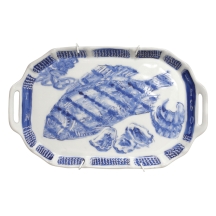 Julie Green’s Last Supper has been on my mind since I saw it at the Block Museum of Art at Northwestern University this summer. The project, I think, is brilliant. In a nutshell, she has painted about 500 (and counting) individual plates to show the meal requests of death row inmates. She includes the state where the execution occurred and the date. Sometimes, when there was no last meal, she has text simply describing situation–a denied request or no request at all, for example.
Julie Green’s Last Supper has been on my mind since I saw it at the Block Museum of Art at Northwestern University this summer. The project, I think, is brilliant. In a nutshell, she has painted about 500 (and counting) individual plates to show the meal requests of death row inmates. She includes the state where the execution occurred and the date. Sometimes, when there was no last meal, she has text simply describing situation–a denied request or no request at all, for example.
To stand in a room full of these plates—there were 357 in the exhibition I saw—is haunting. I felt the presence of these individuals. I knew approximately three things about them, but that was enough to make each one a distinct individual. There is something oddly intimate about knowing what someone wanted for their very last meal.
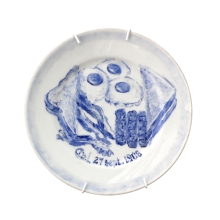 Bagels and coffee. Three eggs, three slices of bacon, three sausages and toast. Fried chicken and watermelon. Grilled fish, oysters, and prawns. Four eggs, four chicken drumsticks, salsa, four jalapeno peppers, lettuce, tortillas, hash browns, garlic bread, two pork chops, white and yellow grated cheese, sliced onions and tomatoes, a pitcher of milk and a vanilla milkshake. A pack of cigarettes.
Bagels and coffee. Three eggs, three slices of bacon, three sausages and toast. Fried chicken and watermelon. Grilled fish, oysters, and prawns. Four eggs, four chicken drumsticks, salsa, four jalapeno peppers, lettuce, tortillas, hash browns, garlic bread, two pork chops, white and yellow grated cheese, sliced onions and tomatoes, a pitcher of milk and a vanilla milkshake. A pack of cigarettes.
Green helps us to think about the humanity of these individuals. By showing us something about them that is so basically human, she deters our tendency to view these individuals as “the evil other,” and instead gives us something in common with them. What would you request?
 Green’s choices underscore her message. Because she uses second-hand plates—and each one unique—the plates feel so personal. As objects, they had previous lives in which they held other meals for other people, and now they carry their own last meals as well. At the same time, there is something monumental and unified about the plates because there are so many of them, and all painted in a brushy style with cobalt blue. There is, after all, one thing that unites all the different lives these plates represent.
Green’s choices underscore her message. Because she uses second-hand plates—and each one unique—the plates feel so personal. As objects, they had previous lives in which they held other meals for other people, and now they carry their own last meals as well. At the same time, there is something monumental and unified about the plates because there are so many of them, and all painted in a brushy style with cobalt blue. There is, after all, one thing that unites all the different lives these plates represent.
What makes this particularly brilliant, at least to my mind, is how Green subtly draws a connection between these individuals and Jesus. The title “Last Supper” is not simply a play on a well-established subject matter in art, she uses it to make bigger claims (or ask bigger questions).
After all—Christ, too, was executed. He also had a last meal.
In this, her project takes on a slightly different angle. Can justice ever be fair, true, and impartial? In Jesus’ case, clearly not. Jesus was tried on trumped-up charges and condemned by a judge who was clearly manipulated by a powerful interest group. And our own justice system? How many of these death sentences have been the result of similar circumstances? How can we ever know?
A student who was with me in the exhibition pointed out that Green’s approach completely elides the facts about the crimes these prisoners committed and that, if we knew the charges, our feelings of connection and maybe even sympathy would likely be significantly diminished. I agree.
What Green does, however, is level the field—to emphasize our common humanity—in order to question our right to judge and condemn to death. Even if they have committed heinous crimes and “deserve to die,” do we have the right to kill them? Jesus said it: “You who are without sin cast the first stone.”
The would-be executioners that Jesus confronted that day knew they needed to put down their stones. Do we?


Lent … On Grapes and Grain
February 9, 2015
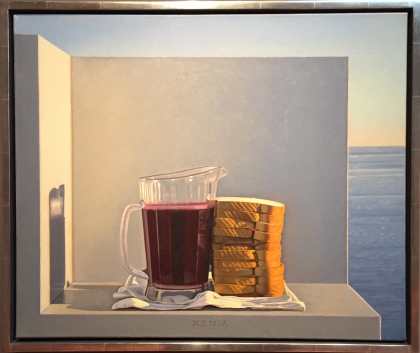
David Ligare, Still Life with Grape Juice and Sandwiches (Xenia), 1994
(Fine Arts Museums of San Francisco)
When in San Francisco in November, I saw this painting at the De Young Museum. It caught my attention—perhaps because it offered a curious contemporary spin on the tried-and-true 19th century trompe l’oeil paintings that surrounded it in the gallery.
If you are not familiar with the term, “trompe l’oeil” is a kind of painting in which the artist tries to “trick the eye” of the viewer into thinking that what you’re looking at is real, not painted. Everything in this type of painting is “life”-size and hyper-realistic so it looks like the objects are just on the other side of the wall, or hanging on the wall of gallery itself. The viewer is confronted with the objects in a much more immediate way than with run-of-the-mill naturalism.
This painting is a little different because we know there is not a hole in the gallery wall that looks out over an expanse of water. And yet, the plastic pitcher and stack of white bread sandwiches is so real you can practically smell the grape juice and bologna. Even as a small image on my computer screen, the painting is conjuring those olfactory memories from my childhood.
But it wasn’t the extreme naturalism that drew my closer look then, or now; it was the allusion to the Eucharist. Not only are the constitutional elements grape and grain, but the white cloth evokes the “corporal cloth” that is used to catch any elements that drop from the paten during the Eucharist.
Because this seems so obvious to me, I was surprised that the label next to the painting mentions nothing of this. But what it does say opens up for me a new way of understanding the Eucharist.
The label explains that Ligare is referencing the juice and sandwiches that are given to people at the homeless shelter where he volunteered. Furthermore, he connects this practice to the Greek notion of hospitality called xenia, a word found inscribed on the stone in the painting. In this way, Ligare expands modern conceptions of hospitality—it’s not just welcoming friends into your own home, it is offering food and shelter to complete strangers as well.
I can’t help but push it one step further. At the Last Supper, when Christ broke bread and poured the wine, he said, “This is my blood of the covenant, which is poured out for many” (Mark 14:24). He was looking at the twelve disciples—the inner circle, his closest friends—yet he told them his death would be for many—the multitude, the unknown, complete strangers.
So, one way of understanding Christ’s sacrificial death may be as a profound act of hospitality. All of humanity—all strangers to God because of being estranged from God—has been given life-giving sustenance.
We’re heading into the long and often lonely journey through Lent. This time, I’ll keep this painting close at hand to remind me of what’s coming. I may have a physical roof over my head, but spiritually I am homeless—empty and desperate. I will be so grateful for Christ’s hospitality in the end of the journey, whenever that may be.
Then, as now, I will drink and eat in remembrance.
(Oh… and no, the irony of bologna is not lost on me.)
Stitching It
October 18, 2014
Whenever I come across any one of these artworks, the other two spring to mind. I have no idea if the artists knew of each others’ work (possible, for two of them) or were referencing each others’ work (doubt it), but nonetheless they are tied together, so to speak.
All three artists stitch–into canvas, into dead skin, into living flesh–and the act of stitching seems to be integral to the meaning of the work. Wojnarowicz’s is perhaps the most gruesome–it is his own mouth he closes with yarn–but Salcedo’s is almost as visceral, perhaps because she’s using skin. Comparatively, Bontecou’s seems merely suggestive, but I can’t help seeing flesh and sinew.
But this isn’t like sewing or embroidery or cross-stitch. These stitches evoke sutures, as if a wound is being closed.
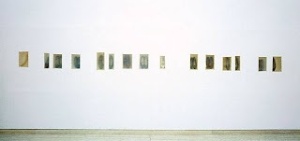
Doris Salcedo, Atribiliarios, 1992

Detail of Salcedo’s work
Salcedo is dealing with wounds–the cultural wounds inflicted by La Violencia in her native Columbia. People were disappeared–here one day, gone the next, with only traces left behind of their existence. These shoes carry, hold, transport the memories of the people that once wore them, and are here buried in the walls, stitched behind pigskin. In a very self-conscious way, she is opening the very wound she closes.
In this way, Salcedo echoes Wojnarowicz, whose stitches do not close a wound at all, but call attention to a culture of silencing that leads to deep psychological pain. He uses his own flesh to locate the hermeutical injustice felt by victims of AIDS in the 1980s. It is not ironic that he had to stitch his mouth closed to finally be heard.

Detail of Bontecou’s work
Operating between and around the other two, Bontecou uses wire to attach recycled canvas to a welded steel frame. The works evoke both machine and flesh, growth and deterioration, cutting and mending. The opening, which is sewn shut in Wojnarowicz’s video, gapes and yawns here. Like with Salcedo’s work, I find myself stepping closer, peering in, wondering what’s in there. Nothing. Black nothingness.
It strikes me that Wojnarowicz is using a slightly different visual idiom–the other two directly reference stitches or sutures, but he sews. Plus, the work is a video, so we see him making the stitches, sewing his mouth shut with blood running down his face. He doesn’t flinch.
Bontecou doesn’t flinch either, in the more metaphorical sense of the word. She does not seem to be referencing either pain or silencing as much as the monstrous. Perhaps it’s because I just finished reading Mary Shelleys’ Frankenstein, but these human-made creatures seem to reach off the wall to swallow me whole.
It is the visual, visceral connection between these artworks that amplifies the power of each. I leave feeling heavy, saddened, burdened. There are so many wounds in this world.
Advent is right around the corner. Come, Jesus, come. And quick.
A Disaster on Your Coffee Table? Really?
April 7, 2014

Robert Polidori,
After the Flood, 2005
This week, I’ve been working on a conference paper about coffee table books that focus on natural disasters like Hurricane Katrina and Superstorm Sandy. I understand coffee table books about Glacier National Park or temples of Japan, but disasters? And there are dozens of them.
The ones that are particularly confounding are the ones that are beautiful. The photographs are beautiful, the layout is beautiful, the printing is beautiful. Take this photograph. It shows a bedroom of a house in New Orleans after the floodwaters have receded. The contents of the room have collapsed or shifted and there’s a layer of grime coating every surface. Even the walls above the waterline have blossomed with mold.
It’s a mess, but it’s a beautiful mess. A soft even light fills the room (thanks to Polidori’s exceptionally long exposure times) and the dirt dulls and harmonizes the colors. Polidori also sets up the composition to create balance (the books on the shelf counterweights the doorway and window) and rhythm (the vertical lines of bedposts and doorframe against the horizontals of the footboard, watermark, and ceiling. This is just one of hundreds of similar photographs collected in Polidori’s book, After the Flood.
Critics are quick to point out that this kind of aestheticization of disaster is exploitative. Here is a photographer who is using people’s ruined lives to make gorgeous images for a beautiful book. The counter-argument, of course, is that the beauty of his images is getting people to look at these ruined lives—people who might otherwise have turned away in disgust.
Aside from the ethics of it, I’m interested in the effects of aestheticization. It puts a filter on the content of image. As a viewer, you may feel like you are getting an unmediated view of the destruction wrought by the storm and flood, but you are really getting something you could not actually see if you were actually standing in the room. For starters, there would not be enough light to actually see everything you see here. Furthermore, because Polidori so subtly incorporates harmony and softness, the content is considerably less jarring—less off-putting—than it would be if you were there. Plus, you’re not wearing an air filtration mask, are you?
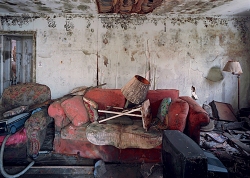
Robert Polidori,
After the Flood, 2005
I believe that the beauty of this coffee table book distances viewers from the actual places, instead of actually bringing them closer. (If you’re into theory, I’m borrowing from Guy Debord here.) If you think about it, any photograph removes us from direct experience, but when a photographer uses a particularly aesthetic approach, it further separates the viewer from the reality that is depicted. Reality is mediated. You’re looking at something through those proverbial rose-colored glasses.
The problem here …
When these disasters are thus mediated for viewers, they (we) don’t actually experience them, or experience their actuality. We are removed. Sure, we may feel sad or astounded or sympathetic (I certainly do!), but those responses are fleeting. Close the book, and we soon forget.
And that’s the irony, the books claim to have been produced so that people would not forget, but I think they may actually facilitate forgetfulness by supplying pages and pages of images that encourage and then satiate our curiosity. We eagerly consume and, by the end, we are emotionally tired. We’re spent. We close the book. And that is all.
War Photographs, Breaking Me Down Hard
March 10, 2014
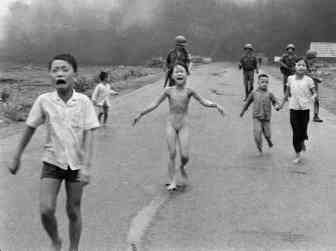
Nick Ut, “Napalm Girl” photo, 1972
Now, I’m teaching a unit on war photography. Of all the units in all the classes I teach, this one is the hardest, by far. I find myself breaking into tears at my desk while prepping a lecture.
It’s too much. I hope for the flu or a massive snowstorm so I don’t have to give tomorrow’s lecture. I don’t want to have to wade through hundreds of these horrifying images to find the ones I want to discuss in class. And I don’t want to talk about them. I would rather skip it. They are too hard to look at and too difficult to contend with.
But that’s exactly why I shouldn’t skip it, I know. So here I am.
Susan Sontag, in her Regarding the Pain of Others, has already grappled with a lot of the tough questions about war photography. Honestly, I don’t find her book particularly helpful, but she does get us thinking and that’s a good thing. She asks questions like …

Ronald Haeberle,
My Lai Massacre, 1968
What are the ethics of taking photos of war? How about publishing them? Do photographers have the ethical responsibility to document the horrors of war? Is taking or publishing a photo of a casualty war an act of justice or exploitation, or something in between.
What is the responsibility of the viewer? Should we look away out of respect for the victims? Or, should we pay more close attention? At what point do we move from being concerned viewers to simple voyeurs, or the other way around? The saturation of our visual worlds tends to make conscientious viewing more difficult, but that’s no excuse. I do think we need to look and we need to think about what we’re seeing.

Timothy O’Sullivan,
Field Where General Reynolds Fell,
Gettysburg, 1863
What is the effect of these photographs, particularly the shocking ones? Do we expect that they will actually change opinions about a war? For the first century of war photography, the images tended to reinforce already established opinions about wars (the British were acting heroically in Crimea; Northern soldiers fought and died to save the Union; soldiers on Iwo Jima signified the strength, solidarity, and hope of all America). But with the Vietnam War, we have some suggestion that photos did change public opinion. In that war and the wars that followed, photographers took a no-holes-barred approach, which gave the public back at home a more complicated picture of what was happening “over there.” Perhaps our soldiers are performing acts of courage and self-sacrifice in the cause of justice and democracy, but other things are happening too—things that are difficult, complicated, and often horrifying. The photos force viewers to grapple with these issues. Force me.
So …

Damir Sagolj,
U.S. Soldier Holds Iraqi Child, 2003
I look at these photographs and weep. I may be pricked by photo that tells a specific story of someone who has suffered—a father, a child, a soldier, a wife, a prisoner—but it is the sheer magnitude of suffering that breaks me down. Each story I see represents hundreds—maybe even thousands—like it. What are we doing to each other? Why?
How dark is the human soul that we resort to such violence? What is the way out?
I admit I am very pessimistic. I don’t see a way out. I don’t have much hope for a more peaceful future. Perhaps that’s why these photographs are so hard for me. They testify to the fallenness of humanity, and it seems like God is so far away.
Maybe that’s the point. We are fallen. It is in our nature to destroy (and in our nature to justify it). We cannot save ourselves from this—it has to be God, in his mercy, who steps in and puts an end to it.
So, I suppose I should get down on my knees and beg for this mercy.
God, please intervene. Do something soon.
Save us.
A Beautiful Landscape?
February 4, 2013
I saw an exhibit of Michael Kenna’s photographs a couple weeks ago. As I walked from photo to photo, I got sucked into one after another, simply because of the simple, calm, meditative, and beautiful compositions.
But then I got to his images of concentration camps, which are just as calm and beautiful as all the rest. Take this one, for example. There is a strong sense of symmetry and lots of soft gray tones. The soft forms of water and cloud balances the sharp focus of the trees, and the verticality of the trunks offsets the broad horizontal band formed by the horizon and shoreline. All these things contribute to the beauty of the photo and, thus, the beauty of this landscape.
And that’s what is troubling to me. This is a photo of a pond where Nazi soldiers dumped the ashes of the people that they burned in the ovens at Birkenau. Under that placid surface lies a story of torment and anguish.
Apparently, these photos, like others by Kenna, are supposed to be about history, memory, and place. And I suppose the stillness and softness of the images does draw the viewer into a state of reflection and repose. If we take the time, we might also be drawn into contemplation, imagining if not remembering the events that went on in such places.
But, for me, there is a strong note of discord between the beauty of the images and the horror of the events those images point to. Kenna made all sorts of choices that enhanced the beauty of these places. He could have taken photographs that are stark, harsh, or jarring—photos that make us unsettled or even disturbed, as we should be given what went on in these places. By aestheticizing these places, these photographs seem to gloss over or (worse) make beautiful something that should be ugly.
I suppose there is another way to look at it. An ugly image would likely cause us to turn away. We may get the message, but we wouldn’t spend time meditating on it. By making beautiful images, maybe Kenna hopes to suck us in and keep us awhile, at least long enough for us to feel (really feel) the weight of these places or, perhaps, to be haunted by the image, causing us to look again and again, compelling us to think more deeply about how a place can seem so innocuous—so beautiful—and yet have such horrific stories to tell.
Well, here I am. Perhaps he made the right choice after all.
Easter … He is not here
April 9, 2012

Fra Angelico, Resurrection of Christ and the Women at the Tomb, 1438-45 (Convent of San Marco, Florence)
I’ve picked such quiet paintings for Lent this year, it seems only fitting that I pick a quiet one for Easter too. This fresco by Fra Angelico seems like the perfect thing.
Fra Angelico packs a lot into this image. The women have come on Sunday morning to anoint the body of Christ, but instead they are greeted by a “man in white”—here, depicted clearly as an angel. He imparts his message with two gestures. He points downward into the empty tomb (“Jesus is not here”) and upward toward a vision of the risen Christ (“because he is risen.”). The women, still clutching their jars of ointment, react with dismay and maybe disbelief.
Jesus appears in all his risen glory in an aureole above the women. Fra Angelico is careful to stick to scripture here. According to the biblical account, Jesus wasn’t present at this point of the story, but Fra Angelico still wants to include the reality and wonder of Christ’s resurrection even as he meditates on the very human experience of the women. So, he sets Jesus apart, giving a vision of the risen Christ only to the viewers of the fresco. Us.
And what a vision! It may not be dramatic—Fra Angelico is always understated—but Christ is still exalted. With the bright white behind him and rays of light streaming out, it looks like he’s glowing. He carries the palm branch of martyrdom in one hand and the flag of the resurrection in the other—and together those symbols tell the story. He died a martyr’s death and then rose from the grave in order to reconcile us to God and conquer death once and for all. Jesus doesn’t really play the part of a victorious hero here, but he does have a look of confidence about him.
 If only the women could see the vision! One of them will meet Christ close to the tomb in a little while, but the others will have to wait. For now, all of them are reeling. And you can see why! They’ve spent the last two days mourning the death of a beloved teacher-friend-son, and now they are told he’s alive again? What!?! Um, could you repeat that? One of the women peers into the tomb as if she wants to see for herself, and he others haven’t yet dried their eyes…
If only the women could see the vision! One of them will meet Christ close to the tomb in a little while, but the others will have to wait. For now, all of them are reeling. And you can see why! They’ve spent the last two days mourning the death of a beloved teacher-friend-son, and now they are told he’s alive again? What!?! Um, could you repeat that? One of the women peers into the tomb as if she wants to see for herself, and he others haven’t yet dried their eyes…
They will, though. And they will become fierce witnesses to this most astonishing of all miracles. I don’t know about you, but I just love these women. Their devotion to Jesus and their strength of character inspires me. They left the tomb, went back to the house where the disciples were hiding out and, even though they knew those men would call them crazy, they were the first to proclaim, “Christ is risen!”
He is risen indeed.
And down in the corner is St. Dominic, kneeling in prayer. He models for us so that we, too, may stop to meditate on the wonder and significance of these events.
Christ is risen. He is risen indeed!

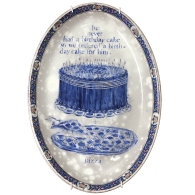

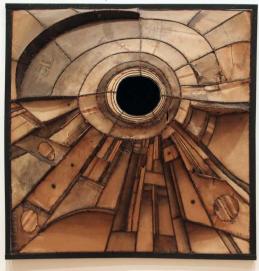
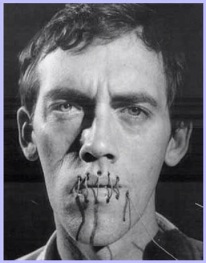

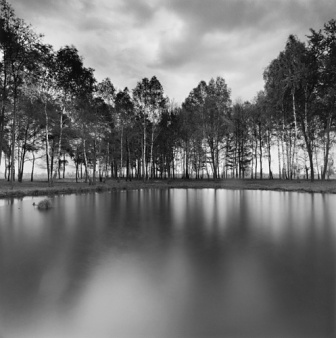


 While the theological messages may be interesting, at the moment I am drawn to the way Michelangelo paints Esther as she addresses Xerxes on his bed. The whites of her eyes glow as she hides behind the other guy and glances cautiously in the direction of Xerxes’s gesture. Here is a woman who is more than a little nervous. Honestly, that’s kind of nice to see in a heroine. She’s not the icon of courage and resolve, but of apprehension and even hesitation. Still, she does the right thing.
While the theological messages may be interesting, at the moment I am drawn to the way Michelangelo paints Esther as she addresses Xerxes on his bed. The whites of her eyes glow as she hides behind the other guy and glances cautiously in the direction of Xerxes’s gesture. Here is a woman who is more than a little nervous. Honestly, that’s kind of nice to see in a heroine. She’s not the icon of courage and resolve, but of apprehension and even hesitation. Still, she does the right thing.

 In the painting, three guys are getting pulled onto the ark. They can’t be Noah’s sons, because there are already at least four men on board. This seems to be Michelangelo’s way of depicting grace. When the waters started to rise, these three didn’t simply look for higher ground or find a little boat for themselves (both of which are logical actions in those circumstances), they turned toward the thing that will really save them. They finally believed Noah’s warnings. They believed God. And so, they too are saved. If that’s not grace, I don’t know what is.
In the painting, three guys are getting pulled onto the ark. They can’t be Noah’s sons, because there are already at least four men on board. This seems to be Michelangelo’s way of depicting grace. When the waters started to rise, these three didn’t simply look for higher ground or find a little boat for themselves (both of which are logical actions in those circumstances), they turned toward the thing that will really save them. They finally believed Noah’s warnings. They believed God. And so, they too are saved. If that’s not grace, I don’t know what is.